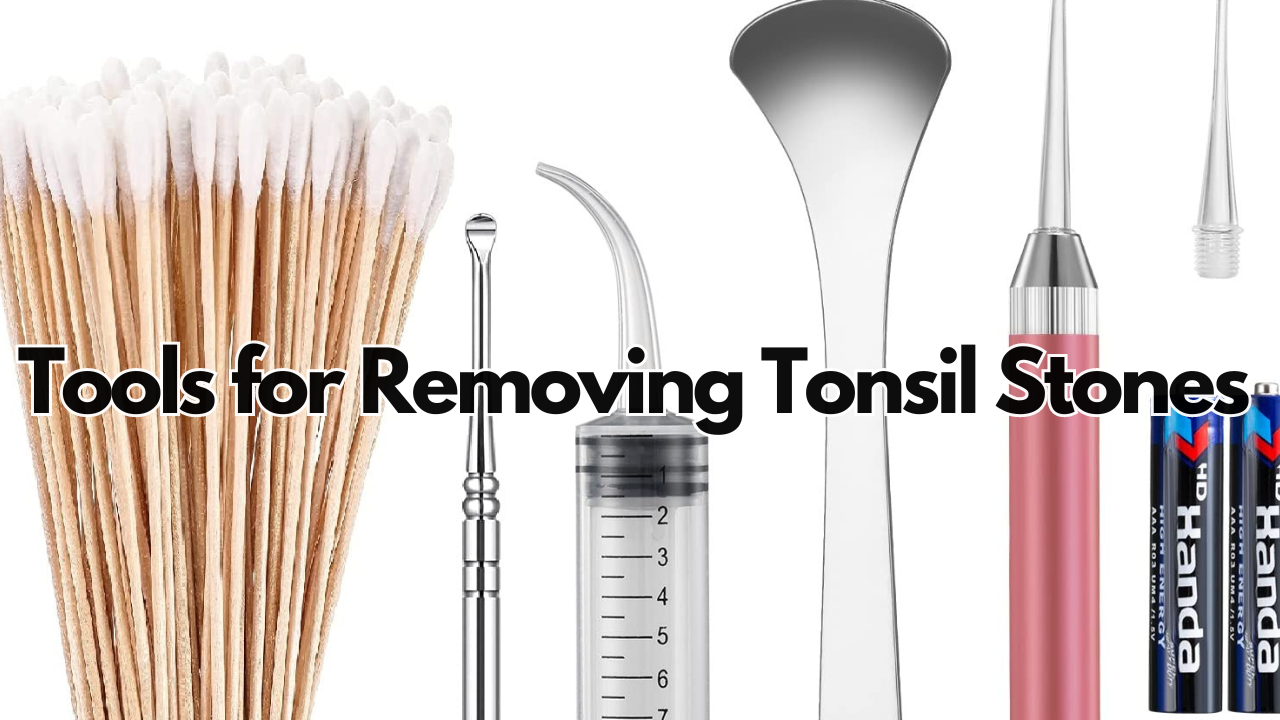Tonsil stones, also known as tonsilloliths, are small, whitish calcifications that can develop on the tonsils. While they may not always cause discomfort, they can sometimes lead to bad breath and throat irritation. If you’re dealing with tonsil stones and looking for practical solutions, you’ve come to the right place. This comprehensive guide will explore various tools and techniques for removing tonsil stones, helping you find relief and improve your oral health.
Understanding Tonsil Stones
Before delving into the tools for removing tonsil stones, let’s briefly understand what they are and why they develop. Tonsil stones form when debris, such as dead cells, mucus, and food particles, gets trapped and calcifies in the crevices of the tonsils. They often appear as small, white, or yellowish bumps and can cause symptoms like bad breath, sore throat, and difficulty swallowing.
Why Removing Tonsil Stones Is Important
While tonsil stones may not always cause noticeable symptoms, they can lead to unpleasant breath odor and discomfort. Additionally, larger tonsil stones can obstruct the throat, leading to more severe issues like recurrent tonsillitis. Therefore, promptly addressing tonsil stones is essential to prevent complications and improve oral hygiene.
Tools for Removing Tonsil Stones
Cotton Swabs
- Description: Cotton swabs, known as cotton buds or Q-tips, are small sticks with cotton tips.
- How to Use: Press the cotton tip against the tonsil stone to dislodge it from its surface.
Water Flossers
- Description: Water flossers, such as oral irrigators, use water to clean between teeth and along the gumline.
- How to Use: Direct the water stream toward the tonsil stones to flush them from the crypts.
Oral Irrigators
- Description: Oral irrigators emit a pulsating stream of water to remove plaque and debris from the mouth.
- How to Use: Adjust the pressure settings and aim the nozzle at the tonsil stones to dislodge and flush them away.
Tonsil Stone Removal Tool
- Description: Tonsil stone removal tools are specifically designed to target and extract tonsil stones safely.
- How to Use: Gently use the tool’s curved tip to scoop out the tonsil stones from the tonsil crypts.
Oral Suction Devices
- Description: Oral suction devices, like tonsil suction irrigators, use suction power to remove tonsil stones.
- How to Use: Position the suction tip near the tonsil stones and activate the device to suction them out.
FAQs (Frequently Asked Questions)
What are tonsil stones, and why do they form?
Tonsil stones, or tonsilloliths, are calcifications that develop in the tonsil crypts due to the accumulation of debris like dead cells and food particles.
Are tonsil stones harmful?
While tonsil stones are not usually harmful, they can cause bad breath and throat discomfort and sometimes lead to recurrent tonsillitis.
Can I remove tonsil stones at home?
You can extract tonsil stones at home using tools such as cotton swabs, water flossers, and tonsil stone removal tools.
Is it safe to use tonsil stone removal tools?
When used correctly, tonsil stone removal tools are safe and effective for extracting tonsil stones. However, it’s essential to be gentle to avoid injuring the tonsils.
How often should I remove tonsil stones?
The frequency of tonsil stone removal depends on the individual’s susceptibility to tonsil stone formation and the size of the stones. Regular oral hygiene practices can help prevent their recurrence.
Can tonsil stones cause bad breath?
Yes, tonsil stones commonly cause bad breath (halitosis) due to the bacteria and debris trapped within them.
Are there any natural remedies for removing tonsil stones?
Some natural remedies, such as gargling with salt water or using a tongue scraper, may help dislodge small tonsil stones. However, severe cases may require medical intervention.
What should I do if I can’t remove tonsil stones at home?
If you cannot remove tonsil stones at home or experience persistent symptoms, consult a healthcare professional for further evaluation and treatment options.
Can tonsil stones come back after removal?
Yes, tonsil stones can recur, mainly if underlying factors contributing to their formation, such as poor oral hygiene or chronic tonsillitis, are not addressed.
Are there any preventive measures for reducing tonsil stone formation?
Regular brushing, flossing, and mouthwash help prevent tonsil stones. Staying hydrated and not smoking can also lower the risk.







